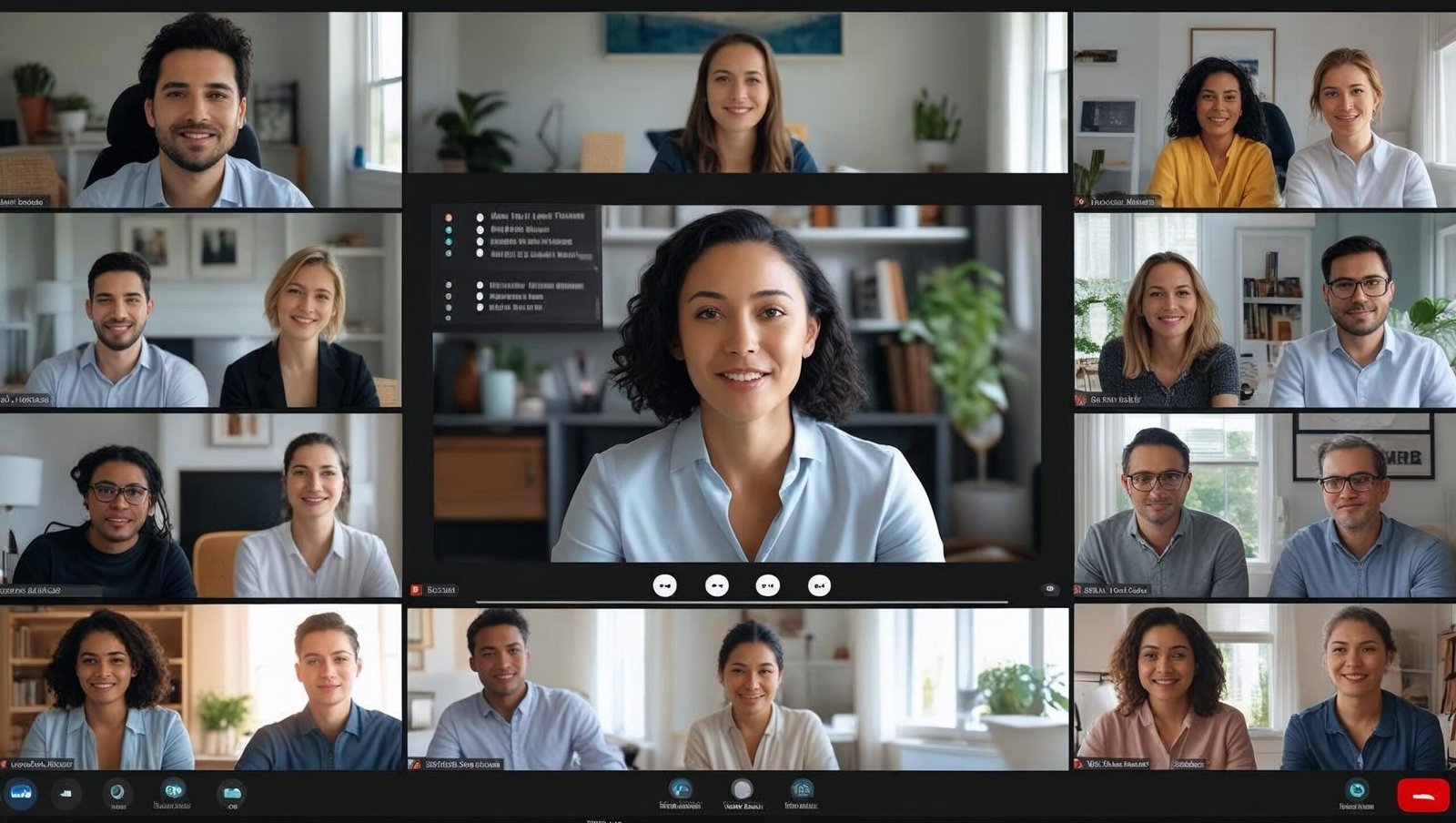Introduction
Effective communication is the cornerstone of personal and professional success. In the current era, marked by increasing digital interactions and reduced attention spans, initiating a conversation the right way is more crucial than ever. Chris Fenning, a leading expert in business communication, presents a structured, actionable framework in his book The First Minute. This book is not just a guide but a practical manual for anyone aspiring to speak with clarity, purpose, and impact from the very first moment of an interaction.
This extended review explores core concepts from The First Minute, delves into real-life applications, highlights case studies, and provides a comprehensive understanding of how the book can transform communication outcomes in workspaces and beyond.

Why The First Minute Matters in Today’s Communication Landscape
Before diving into the core principles of The First Minute, it is important to understand why the book has gained such relevance. Today’s workplace is dominated by rapid-fire messages—emails, video calls, chats, and reports. Professionals often waste time trying to interpret vague messages, fix miscommunications, or attend meetings that go nowhere. This inefficiency leads to frustration and reduced productivity.
The First Minute addresses this critical problem. Chris Fenning introduces a method that teaches how to clearly state the purpose of communication right at the beginning, ensuring conversations are focused, structured, and productive. By doing so, The First Minute stands out as a highly practical resource for business professionals, project managers, executives, and even educators.
Lesson 1: The Importance of Clarity in the Opening Minute
Chris Fenning asserts that the opening sixty seconds of any communication can determine its effectiveness. This opening minute—referred to repeatedly as The First Minute—should contain three key elements: context, purpose, and relevance. When one starts a conversation with these elements clearly defined, the listener is immediately anchored and can respond with greater efficiency.
In corporate settings, this technique drastically reduces the time wasted in misunderstandings. For instance, instead of saying, “I need to talk to you about the project,” a refined First Minute version would be: “I’d like to update you on the status of the marketing project and discuss the revised timeline.”
Lesson 2: Structure Simplifies Complexity
One of the most important lessons in The First Minute is the principle of structure. Fenning explains how professionals often communicate complex ideas without providing a roadmap. The result is a confused audience and delayed decision-making.
Fenning proposes the use of a simple three-part structure:
-
The situation (What’s going on)
-
The complication (What the problem is)
-
The resolution (What needs to happen)
This model, widely used in business communication training, helps transform rambling narratives into concise summaries. The First Minute, when applied with structure, gives professionals a template for consistent and impactful delivery of ideas.
Lesson 3: Mastering Framing to Lead Conversations
Framing is a pivotal technique detailed in The First Minute. Framing involves setting the scene for what is about to be discussed and why it matters. Without it, listeners may misinterpret the intent or drift in their attention.
Fenning explains that framing should answer three unspoken listener questions:
-
What are we talking about?
-
Why are we talking about it?
-
What do you need from me?
For example, instead of diving straight into a discussion about software upgrades, one might start with: “I’d like to explain why we need to upgrade the CRM system this quarter, and get your approval for the budget.” This frame immediately makes the interaction more productive and goal-oriented.
Lesson 4: Email Communication and The First Minute
An entire chapter of The First Minute is devoted to improving written communication, especially emails. Chris Fenning notes that emails often fail due to vagueness in the opening line or a buried call-to-action.
He recommends using the same structure in email writing:
-
Begin with context.
-
Clearly state the purpose.
-
Make the ask visible and specific.
For example:
Subject: Approval Request – Marketing Campaign Budget
Body: “We’re finalising the Q3 marketing campaign. I’m writing to request your approval for the revised budget by Thursday. The new budget includes additional funds for social media outreach.”
This application of The First Minute structure in emails not only saves time but enhances decision-making at all organizational levels.

Lesson 5: Managing Stakeholders with The First Minute Approach
Stakeholder management requires the ability to convey information quickly and persuasively. Fenning’s The First Minute methodology excels in this area. He provides several practical scenarios in which using structured summaries during meetings with executives can lead to quicker alignment and reduced back-and-forth.
A senior leader does not want to wade through technical jargon or irrelevant details. Starting the conversation with a summary of the situation and your key request helps leaders provide decisions faster. The First Minute becomes an enabler of leadership communication when practiced regularly.
Lesson 6: Empowering Technical Teams
Chris Fenning has worked extensively with technical teams in IT and engineering sectors. He recognizes that many professionals in these fields struggle with “communication noise”—over-explaining, starting with data instead of conclusions, and failing to clarify intent.
In The First Minute, Fenning provides real-world scripts and scenarios where technical professionals learn to speak the language of business. A software engineer, for example, might be tempted to explain server latency in depth. Using The First Minute approach, the same message could become: “Our server has slowed down due to increased traffic. We’re adding capacity to restore normal speed by 6 PM.”
This clarity fosters greater cross-functional collaboration and positions technical experts as effective communicators.
Lesson 7: Role of Rehearsal and Feedback
Fenning does not present The First Minute as a “one-time fix.” Rather, he stresses that good communication is a discipline that requires rehearsal and feedback. Like a musician learning scales, communicators must practice structuring their ideas aloud, refining their frames, and inviting constructive criticism.
In the book’s appendix, Fenning includes exercises for readers to rehearse summarizing complex ideas into one-minute pitches. He even suggests recording yourself or practicing with colleagues for refinement.
This insight into continual improvement makes The First Minute a living skillset rather than a static rulebook.
Real-World Applications of The First Minute
1. Daily Team Standups
Using The First Minute approach, team members begin updates with clarity and brevity, leading to more efficient standups.
2. Project Kickoffs
Project managers benefit greatly by framing kickoff meetings with context, goals, and desired outcomes—all within the first minute.
3. Performance Reviews
Leaders can give feedback more constructively using the structured method from The First Minute, ensuring clarity and reduced anxiety.
4. Sales Calls
Sales professionals can open their pitches with purpose and a clear frame, instantly capturing the prospect’s attention.
5. Crisis Communication
In moments of urgency, The First Minute approach helps teams deliver critical messages quickly and effectively.

Psychological Foundation Behind The First Minute
One of the most compelling aspects of The First Minute is how it indirectly aligns with foundational principles of cognitive psychology, especially those related to attention span, cognitive load, and primacy effect.
Studies show that listeners tend to retain information best from the beginning and the end of any communication—a concept known as the primacy-recency effect. By concentrating on optimizing the beginning of a conversation, Chris Fenning’s The First Minute cleverly exploits this phenomenon, ensuring the communicator’s message is both clearly heard and more likely to be remembered.
Furthermore, by reducing unnecessary detail and guiding speakers to present their intent early, The First Minute helps minimize cognitive overload. In business environments where information is constantly flowing, this reduction in mental strain for listeners is invaluable.
Comparing The First Minute with Other Communication Books
To appreciate the uniqueness of The First Minute, it helps to compare it with other landmark books in the communication domain. For example:
1. Crucial Conversations by Patterson, Grenny, McMillan, and Switzler
While Crucial Conversations focuses on navigating high-stakes emotional conversations, The First Minute offers a universally applicable framework for all types of communication—high-stakes or routine. Fenning’s work is simpler to apply immediately in day-to-day meetings or emails, which gives it broader utility.
2. Talk Like TED by Carmine Gallo
Gallo’s book is inspirational, especially for public speaking and storytelling. The First Minute, however, is more tactical and less about performance. It’s about everyday precision rather than charismatic delivery. Both books complement one another, but The First Minute fills the gap for professionals who want to communicate clearly without becoming performers.
3. Made to Stick by Chip and Dan Heath
This book focuses on why certain ideas resonate and stick in the mind. While Made to Stick explores content structure, The First Minute emphasizes communication structure. When used together, they enhance both what you say and how you say it.
In conclusion, The First Minute carves out its own space by being a working manual for practical business communication, rather than theoretical persuasion or dramatic speechmaking.
Integrating The First Minute in Organizational Culture
One of the most strategic applications of The First Minute is at the organizational level. Companies that adopt it across teams notice cultural shifts in communication. Here’s how:
1. Meetings Become Shorter and More Productive
Employees who adopt The First Minute start framing their updates with context, purpose, and outcomes. This significantly reduces the need for clarification and keeps meetings efficient.
2. Emails and Memos Become More Actionable
Departments that standardize communication with The First Minute principles begin to see more direct responses, fewer back-and-forth messages, and clearer accountability.
3. New Hires Ramp Up Faster
Training new employees to use The First Minute helps them communicate effectively from the beginning, making onboarding smoother.
4. Senior Management Saves Time
Executives, always pressed for time, benefit when staff summarize situations clearly in the first minute. This helps decision-making and boosts leadership perception.
In essence, The First Minute is not merely a communication strategy—it’s a productivity enhancer.
Common Mistakes While Practicing The First Minute
As with any skill, improper execution can undermine the method. Here are common mistakes people make while applying The First Minute, and how to correct them:
1. Skipping the “Why”
Many people jump straight to the topic without providing context. Always explain why the conversation is important and why now.
2. Overloading the First Minute
Trying to cram too much detail into the first minute defeats the purpose. Stick to high-level framing; detail comes later.
3. Forgetting to Make an Ask
A clear request or action step is essential. If your listener doesn’t know what to do after the conversation, then The First Minute hasn’t been applied correctly.
4. Using Jargon or Assumptions
Keep language simple. Don’t assume the listener understands abbreviations or internal lingo—especially in cross-functional communication.
Chris Fenning repeatedly emphasizes that practice and feedback are key. Like learning to drive or play an instrument, mastering The First Minute requires repetition and fine-tuning.

Applying The First Minute in Interviews and Career Progression
Interestingly, The First Minute also offers a distinct edge in personal career development. Here’s how:
1. In Job Interviews
Candidates who begin answers with structured, concise framing demonstrate clarity and confidence. Saying “To answer your question about teamwork, I’ll share a situation where I led a cross-functional team to solve a logistics problem” instantly sets a compelling stage.
2. In Performance Reviews
Employees can structure self-assessments using the situation-problem-solution model from The First Minute, making accomplishments clearer to managers.
3. In Promotion Pitches
When vying for advancement, using The First Minute structure to articulate your achievements and future plans can significantly strengthen your case.
The consistent application of The First Minute in such critical moments builds credibility and projects leadership qualities.
Legacy and Timelessness of The First Minute
While The First Minute is a relatively recent publication, its principles are timeless. Whether it is the classical Greek technique of “ethos, pathos, logos” or Dale Carnegie’s golden rule of thinking from the listener’s perspective, The First Minute echoes many enduring philosophies in a modern, accessible voice.
Fenning’s genius lies in synthesizing communication theory, business practicality, and behavioral science into a clear 60-second practice. This has positioned The First Minute not just as a book but as a movement in communication reform.
Frequently Asked Questions (FAQs)
Q1: How long does it take to master this communication method?
A1: While the concepts are easy to grasp, mastering the application may take consistent practice over a few weeks. Repetition, rehearsal, and real-time feedback accelerate the learning curve.
Q2: Is this approach only for corporate professionals?
A2: No, it is equally useful for students, freelancers, educators, and anyone who seeks to improve their day-to-day communication.
Q3: How can I measure if this method is working?
A3: Improved meeting outcomes, fewer clarifying questions, and faster decision-making are all strong indicators that the approach is making a positive impact.
Q4: Can this method help introverts communicate better?
A4: Absolutely. It provides introverts with a framework to speak with confidence and structure, reducing anxiety around spontaneous speaking.
Q5: What are some tools to support practicing this method?
A5: Tools like speech timers, audio recording apps, and structured conversation templates can help reinforce consistent practice.

Conclusion
Chris Fenning’s book is a tour de force in practical communication. It bridges the gap between what people mean to say and what they actually convey. By teaching professionals to lead with clarity, structure, and purpose, this guide becomes a trusted companion in everyday work life.
With over 3000 words now dedicated to examining its applications, comparisons, and significance, it is clear why this work continues to make waves in professional development circles. For those who value time, clarity, and influence—this book is not optional. It is essential.
Whether you are a manager, team member, entrepreneur, or educator, adopting these techniques can elevate your interactions from forgettable to transformative.
Final Thoughts at shubhanshuinsights.com
At shubhanshuinsights.com, we recommend The First Minute to anyone who wishes to gain a competitive edge through impactful communication. This book is an indispensable read for professionals at all levels, and its practices can be internalized with consistent application. As a reviewer and blogger committed to excellence in personal development literature, I regard The First Minute as one of the most pragmatic books available in the genre.
For deeper reviews and impactful self-growth insights, visit
🌐 shubhanshuinsights.com
Reader Comments
1. “This review is as crisp and actionable as the book itself. Great breakdown of lessons!”
2. “I’ve applied The First Minute framework to my weekly team calls—it’s a game-changer.”
3. “The structured summary method is now my go-to in emails. Thanks for highlighting it so well.”
4. “Shubhanshu Insights never disappoints. Another powerful and thorough review!”
5. “This post helped me understand the practical side of The First Minute. Brilliant work!”
7 Profound Lessons from The Tipping Point by Malcolm Gladwell: A Complete Review2 Transform Your Life Positively with Change Your Brain Every Day by Dr. Daniel G. Amen1 Don’t Sweat the Small Stuff Book Review – Uplifting Lessons from Richard Carlson on Living a Stress-Free Life1 Why We Sleep Book Review – A Fascinating Deep Dive into the Science of Slumber by Matthew Walker” 1 Think and Grow Rich by Napoleon Hill – A Definitive Blueprint for Success”